Jaguar E-Pace vs Nissan Leaf – Which car suits you better?
Two cars, one duel: Jaguar E-Pace meets Nissan Leaf.
Which one wins in performance, efficiency and value for money? Find out now!
Costs and Efficiency: Looking at overall running costs, both models reveal some interesting differences in everyday economy.
Nissan Leaf has a barely noticeable advantage in terms of price – it starts at 30800 £, while the Jaguar E-Pace costs 32400 £. That’s a price difference of around 1629 £.
As for range, the Nissan Leaf performs significantly better – achieving up to 385 km, about 316 km more than the Jaguar E-Pace.
Engine and Performance: Power, torque and acceleration are the classic benchmarks for car enthusiasts – and here, some clear differences start to show.
When it comes to engine power, the Jaguar E-Pace has a slightly edge – offering 269 HP compared to 217 HP. That’s roughly 52 HP more horsepower.
In acceleration from 0 to 100 km/h, the Nissan Leaf is barely noticeable quicker – completing the sprint in 6.90 s, while the Jaguar E-Pace takes 7.30 s. That’s about 0.40 s faster.
In terms of top speed, the Jaguar E-Pace performs evident better – reaching 211 km/h, while the Nissan Leaf tops out at 157 km/h. The difference is around 54 km/h.
There’s also a difference in torque: Jaguar E-Pace pulls evident stronger with 540 Nm compared to 340 Nm. That’s about 200 Nm difference.
Space and Everyday Use: Whether family car or daily driver – which one offers more room, flexibility and comfort?
Both vehicles offer seating for 5 people.
In curb weight, Nissan Leaf is slightly lighter – 1580 kg compared to 1783 kg. The difference is around 203 kg.
In terms of boot space, the Jaguar E-Pace offers clearly perceptible more room – 494 L compared to 394 L. That’s a difference of about 100 L.
In maximum load capacity, the Jaguar E-Pace performs evident better – up to 1170 L, which is about 380 L more than the Nissan Leaf.
When it comes to payload, Jaguar E-Pace clearly perceptible takes the win – 554 kg compared to 415 kg. That’s a difference of about 139 kg.
Who comes out on top?
Overall, the Nissan Leaf shows itself to be barely ahead and secures the title of DriveDuel Champion.
It convinces with the more balanced overall package and proves to be the more versatile choice for everyday use.
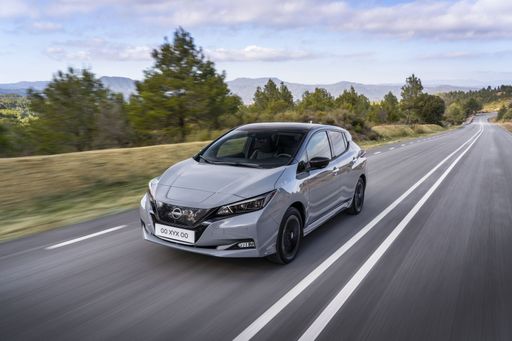
Nissan Leaf
Jaguar E-Pace
The Jaguar E-Pace is a compact SUV that combines the brand's signature luxury with a dynamic driving experience. Its sleek design features graceful lines and an assertive stance, making it a standout on any road. Inside, the E-Pace boasts a meticulously crafted interior with high-quality materials and advanced technology, providing both comfort and connectivity for drivers and passengers alike.
details @ media.jaguar.com
@ media.jaguar.com
 @ media.jaguar.com
@ media.jaguar.com
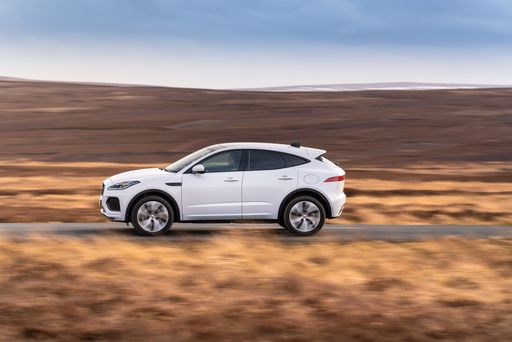 @ media.jaguar.com
@ media.jaguar.com
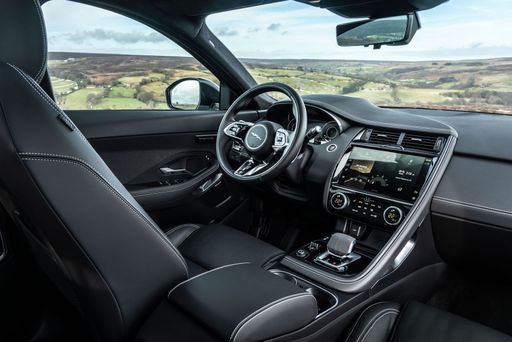 @ media.jaguar.com
@ media.jaguar.com
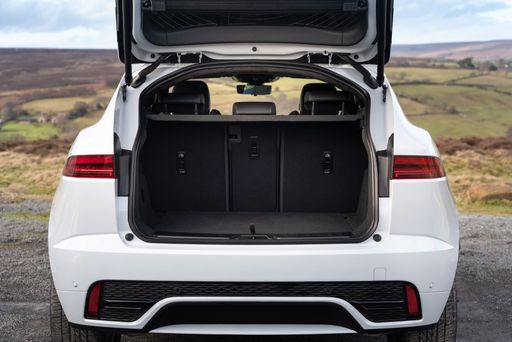 @ media.jaguar.com
@ media.jaguar.com
Nissan Leaf
The Nissan Leaf stands out as a pioneering model in the realm of electric vehicles, known for its impressive blend of practicality and eco-friendliness. It offers a smooth and quiet driving experience, making it an ideal choice for city commuting and longer journeys alike. The interior design is both comfortable and intuitive, providing drivers with a sense of modernity and ease of use.
details @ germany.nissannews.com
@ germany.nissannews.com
 @ germany.nissannews.com
@ germany.nissannews.com
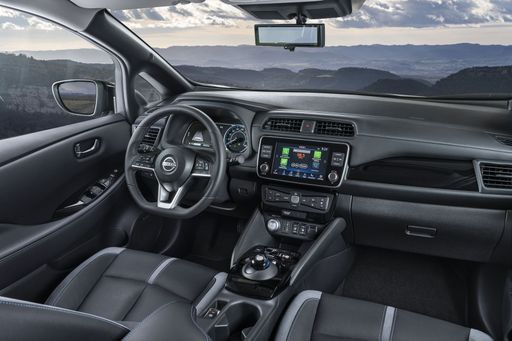 @ germany.nissannews.com
@ germany.nissannews.com
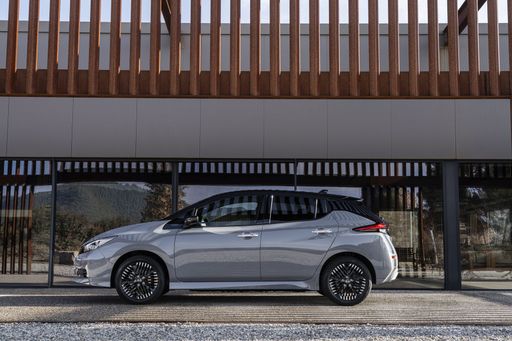 @ germany.nissannews.com
@ germany.nissannews.com

|

|
|
|
|
Costs and Consumption |
|
|---|---|
|
Price
32400 - 56100 £
|
Price
30800 - 37200 £
|
|
Consumption L/100km
1.4 - 8.2 L
|
Consumption L/100km
-
|
|
Consumption kWh/100km
-
|
Consumption kWh/100km
16.7 - 17.8 kWh
|
|
Electric Range
69 km
|
Electric Range
270 - 385 km
|
|
Battery Capacity
11.50 kWh
|
Battery Capacity
39 - 59 kWh
|
|
co2
33 - 185 g/km
|
co2
0 g/km
|
|
Fuel tank capacity
56 - 67 L
|
Fuel tank capacity
-
|
Dimensions and Body |
|
|---|---|
|
Body Type
SUV
|
Body Type
Hatchback
|
|
Seats
5
|
Seats
5
|
|
Doors
5
|
Doors
5
|
|
Curb weight
1783 - 2173 kg
|
Curb weight
1580 - 1756 kg
|
|
Trunk capacity
494 L
|
Trunk capacity
385 - 394 L
|
|
Length
4395 mm
|
Length
4490 mm
|
|
Width
1984 mm
|
Width
1788 mm
|
|
Height
1648 mm
|
Height
1540 - 1545 mm
|
|
Max trunk capacity
1170 L
|
Max trunk capacity
790 L
|
|
Payload
497 - 554 kg
|
Payload
384 - 415 kg
|
Engine and Performance |
|
|---|---|
|
Engine Type
Plugin Hybrid, Diesel MHEV, Petrol MHEV
|
Engine Type
Electric
|
|
Transmission
Automatic
|
Transmission
Automatic
|
|
Transmission Detail
Automatic Gearbox
|
Transmission Detail
Reduction Gearbox
|
|
Drive Type
All-Wheel Drive, Front-Wheel Drive
|
Drive Type
Front-Wheel Drive
|
|
Power HP
160 - 269 HP
|
Power HP
150 - 217 HP
|
|
Acceleration 0-100km/h
7.3 - 10.5 s
|
Acceleration 0-100km/h
6.9 - 7.9 s
|
|
Max Speed
190 - 211 km/h
|
Max Speed
144 - 157 km/h
|
|
Torque
260 - 540 Nm
|
Torque
320 - 340 Nm
|
|
Number of Cylinders
3 - 4
|
Number of Cylinders
-
|
|
Power kW
118 - 198 kW
|
Power kW
110 - 160 kW
|
|
Engine capacity
1498 - 1998 cm3
|
Engine capacity
-
|
General |
|
|---|---|
|
Model Year
2024
|
Model Year
2019
|
|
CO2 Efficiency Class
B, G
|
CO2 Efficiency Class
A
|
|
Brand
Jaguar
|
Brand
Nissan
|
What drive types are available for the Jaguar E-Pace?
The Jaguar E-Pace is offered with All-Wheel Drive or Front-Wheel Drive.
The prices and data displayed are estimates based on German list prices and may vary by country. This information is not legally binding.
